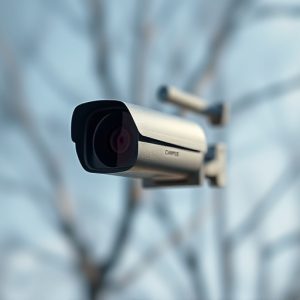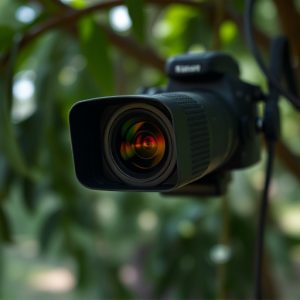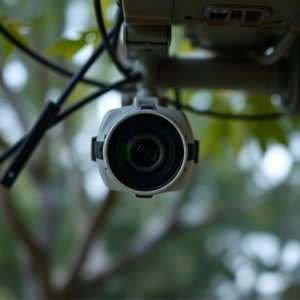Unveiling Hidden Cameras: RF Detector Sweep Tutorial for Apartments
Mini Surveillance Cameras for apartments offer homeowners and renters enhanced security with high-re…….
Mini Surveillance Cameras for apartments offer homeowners and renters enhanced security with high-res video, easy installation, and real-time access via smartphone apps. Detecting these cameras requires specialized RF (Radio Frequency) detection equipment to scan frequencies like 2.4 GHz or 5.8 GHz. A thorough RF detector sweep using tools like high-quality detectors, amplifiers, and antennas, along with protective gear, is crucial for identifying and locating hidden mini surveillance cameras in apartments. The process involves calibrating the detector, methodically scanning spaces, and confirming peak readings to ensure privacy and security.
Uncover the hidden eyes within your apartment with our comprehensive guide on detecting mini surveillance cameras. In today’s digital age, privacy is paramount, and understanding how to identify these covert devices is crucial. This tutorial delves into the world of RF (radio frequency) detection, teaching you to locate hidden cameras using basic principles and tools readily available. Learn the secrets behind identifying mini surveillance cameras for apartments and take control of your personal space.
- Understanding Mini Surveillance Cameras for Apartments
- Detecting RF Signals: The Basics
- Tools and Equipment for an Effective Sweep
- Step-by-Step Guide to Locating Hidden Cameras Using RF Detection
Understanding Mini Surveillance Cameras for Apartments
Mini Surveillance Cameras for Apartments have become increasingly popular among homeowners and renters seeking enhanced security. These compact, often wireless devices offer a discrete way to monitor indoor spaces, providing peace of mind by capturing high-resolution video footage. Their small size allows them to be easily concealed in various locations, from above door frames to behind picture frames, making it challenging for potential intruders to detect their presence.
Compared to traditional security systems, Mini Surveillance Cameras are user-friendly, offering easy installation and real-time access through smartphone apps. Many models feature motion detection, alerts, and night vision capabilities, ensuring round-the-clock surveillance. With cloud storage options, users can remotely review footage from anywhere, making them a convenient solution for apartment dwellers looking to safeguard their personal spaces.
Detecting RF Signals: The Basics
Detecting RF (Radio Frequency) signals is a crucial step in identifying and locating hidden cameras, especially those used in mini surveillance cameras for apartments. These miniature devices often operate on specific radio frequencies to transmit video feeds, making them vulnerable to detection by specialized equipment. The first step is to understand the frequency range commonly associated with such cameras. Mini surveillance cameras typically use RF bands like 2.4 GHz or 5.8 GHz for wireless transmission, which are accessible through a dedicated RF detector.
By sweeping across these frequency ranges, experts can pinpoint the exact signal coming from hidden cameras within an apartment. The process involves scanning and analyzing each potential channel until the unique pattern of the camera’s transmission is detected. This technique requires patience and precision to ensure accurate identification without alerting the presence of monitoring equipment, making it a valuable skill for privacy advocates and security professionals alike.
Tools and Equipment for an Effective Sweep
When conducting an RF detector sweep for hidden cameras, particularly in apartment settings, having the right tools is paramount to ensuring an effective search. Key equipment includes a high-quality RF detector capable of picking up signals from mini surveillance cameras, which often operate on specific frequency bands. Additionally, a signal amplifier can boost weak signals, making it easier to detect clandestine cameras. A directional antenna helps narrow down the source of the signal, pinpointing the location of the hidden device with greater accuracy.
Don’t forget the importance of protective gear, such as RF shielding gloves, to minimize exposure to electromagnetic fields. A well-prepared technician equipped with these tools is better able to detect and dismantle even the most sophisticated mini surveillance cameras used in apartments, ensuring tenant privacy and security.
Step-by-Step Guide to Locating Hidden Cameras Using RF Detection
Locating hidden cameras using Radio Frequency (RF) detection is a meticulous process that requires patience and precise techniques. Here’s a step-by-step guide to help you identify miniature surveillance cameras commonly used in apartments:
1. Prepare Your RF Detector: Start by calibrating your detector according to the manufacturer’s instructions. Ensure it’s set to the correct frequency range, typically between 2.4 GHz and 2.5 GHz, where many mini surveillance cameras operate. Test its sensitivity to ensure it can pick up weak signals.
2. Scan Your Area Systematically: Move methodically through the space you suspect might contain hidden cameras. Hold the detector at a consistent distance from walls, floors, and ceilings, as signals can be affected by these surfaces. Pay close attention to areas often overlooked or with unusual physical features, such as voids behind furniture or irregular wall textures.
3. Identify Peak Readings: When the detector registers a peak signal, it could indicate the presence of an active camera. Note these locations and perform further checks using visual aids like thermal imaging cameras or infrared sensors for confirmation.
4. Investigate Confirmed Hotspots: Once you’ve identified potential hidden camera locations, take additional measures to confirm their existence. This might involve removing objects, checking behind walls, or using specialized tools designed for such tasks. Remember, mini surveillance cameras can be tiny and discreetly placed, so thoroughness is key.
Detecting hidden mini surveillance cameras in apartments has become a crucial skill in today’s digital era. By understanding radio frequency (RF) signals and utilizing specialized tools, you can effectively sweep your living space to ensure privacy. The step-by-step guide provided offers a practical approach to locating these clandestine devices, empowering folks with the knowledge to navigate this modern-day enigma. Remember that being aware of your surroundings and taking proactive measures are key to safeguarding your personal spaces from unwanted surveillance.


